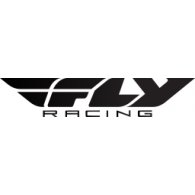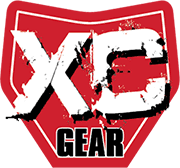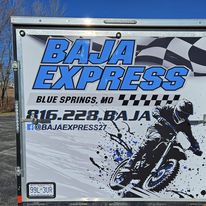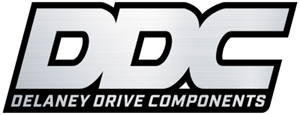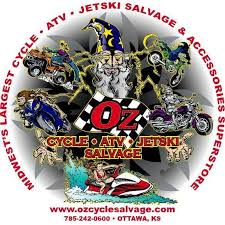First time racing FMHSC
To make this as informative as possible, let us start with the history of FMHSC…
Our series, the ‘Forward Motion Hare Scramble Championship’, began holding hare scrambles in the state of Kansas in 1979, at that time we were known as the ‘Kansas Hare Scramble Series’. We have continued our events non-stop since that time. Our series split off from the western half of our state in 1994 and adapted our current name at that time. We also began holding races in Kansas and Missouri at that time.
The next big step came in 2000 when Tammy Brooks launched her own website about and for the series at www.kansasoffroad.com. Largely due to this website and the switch to computer scoring in 2001 attendance at our events began to steadily grow at approximately ten percent per year. In 2007 we launched a new website: www.fmhsc.com and in 2008 we switched to Moto-Tally for our computer scoring. In 2010 we had an average attendance of about 165 riders. Moto-Tally allows us to use the results from each race to create an index system to ensure that riders are in the correct class, we currently have 11 class divisions. The average attendance in each class varies from 10 to 35 riders. We hold 15 races at twelve or more locations each season. The races are almost all within a 120 mile radius of Kansas City. Our season is from March through November.
We recognize the delicate balance between hard core race events and the need for a beginner friendly track. Our courses are challenging but offer alternate routes when necessary to ensure every entry can make it around. We want this to be a family event where everyone feels welcome and safe at all times. We try to keep our tracks and pits safe for all riders and spectators. Some tracks offer overnight camping. To keep things safe for everyone, the pit area requires very slow operation of motorcycles and vehicles. Always remember that children are playing all around the area and are sometimes hard to see.
We hope you will come give us a try and become a part of the Forward Motion Family.
Race Day
Basic riding gear is a must when you are going past trees at race speeds. A good set of hand guards and a drink system will both be very high on the suggestion list. A gas tank that holds three gallons or more will get you through a race without stopping. If you have a smaller tank, plan a pit stop just past the one hour point of the race. Place the gas can just off of the trail where you can get to it during the race and still be out of the path of other racers. An extra set of goggles and gloves, stored with the gas can, may come in handy.
Show up early so you can beat the crowd and give yourself some time to relax and take it all in. Gates open at 8:00. A gate fee of $10 dollars for each person 12 years old or older, will be charged. Once inside find a good parking spot then head right for the sign up location which opens about 8:30. It is usually a trailer parked alongside the track and sign up will be the non track side. Bring your helmet to sign up at every race. There will be a table with blank sign up cards. Fill out a new card at your first event. After that the following will apply…
Sign up information sheet
At only your first race of the year you will fill out a sign up card. After that, use the same card each time and just sign the back for each event. The alphabet has been split into three boxes. The cards are filed by alphabet but not alphabetical inside each letter file. Look through all the cards in the file that your last name begins with before you fill out a new one. Do not mix up the cards while you are shuffling through them. Keep the A’s in the A file and so on …
Make sure your card is completely filled out. This will help us contact your and you will then be able to receive email notifications from us.
Make sure someone can read it! Show it to the guy behind you and see if he can figure out what you wrote.
Make sure you sign the back for each race.
If your rode a race last year, your percentile is on a spreadsheet located on the sign up table. Based on your percentile you can choose the correct class. An FMSHC worker should be nearby to answer any questions. Look for a safety vest. If you don’t find anyone, every rider in our group can help you or you can talk to the ladies doing sign up.
If you did not race last year, try to determine what your speed is by talking to your buddies who race our series. If you have no way to determine your speed, pick what you think is close. After one race, (or even one good lap) you will have a percentile and you can then change classes if needed.
If you have signed up early for a number, make sure the scoring person knows what your number is.
Transponders will never need to be rewritten again. You will be able to change classes/numbers and not have to rewrite your transponder. You will even be able to ride a team race and neither team member will need to have a transponder rewritten.
Transponders cost $10 to buy. Transponders must me stuck to your helmet just under the visor unless otherwise approved to be in a different location.
Temporary numbers cost $5 per set. Permanent numbers really help everyone involved. ALL THREE NUMBER PLATES MUST SHOW THE CORRECT NUMBER OR YOU DON’T RACE!
Test your transponder on your practice lap on your bike. Don’t just test it by walking through. This is your responsibility. If you don’t read during the race, you don’t get that lap. This is critical. During testing the display also tells you if you are entered into the race.
Entry fee is $15.00 for Juniors, $50 for Expert, and all others are $40. Take your card and your money to the scoring personnel. They can help you pick a class and answer all of your questions. They will program a transponder for you and explain how it must be mounted. Here is some more transponder and scoring information…
Information about your transponder
The Scoring System provides a revolutionary way of scoring off road events – one we’re convinced will soon be the standard for scoring all off-road motorcycle events. Just like anything new, it’s important that you take the time to become familiar with some of the details of this system.
About the Transponder - Our transponders are manufactured by Alien Technology. The transponders are very durable and require virtually zero maintenance, no batteries, and have an indefinite life. They can be covered with mud or completely hidden with layers on layers of duct tape and still have full reliability at the checkpoint. When issued, they will already be programmed with your rider Information and will not need to be programmed again.
Scoring – Please remember that with implementation of transponders, it’s the rider’s responsibility to ensure they have been scored. A remote display is available at all events, displaying the rider number, the rider class, current standing, and how far behind the nearest rider in the class. You’ll know you’ve been scored when you see your information on the display.

The Checkpoint - The transponder is detected when the rider passes the antenna (pictured above) at the finish line. You will be disqualified if you run into the antenna. The system isn’t cheap, so we expect riders to do their part in helping us keep a quality, reliable system. Time will be allocated prior to the race where you can make some practice passes through the checkpoint to confirm the readability of the transponder. All riders must conduct this self-test at every event, to ensure the transponder is mounted properly. It is far better to find out before the race than it is to discover problems at race time.
Checkpoint Speed - If properly mounted, the system will detect riders at almost any speed. Riders should slow down when passing through the checkpoint. Speed at the checkpoint will be controlled with a 180 turn to eliminate any possibility of passing through faster than the backup scoring person can read your number. The “U” turn also takes you back past the antenna just in case it doesn’t read on the way in.
Does the transponder differentiate between me and another rider? The system is easily able to differentiate between riders at the checkpoint – regardless how close they are together. Riders will go through the checkpoint single file, so there’s no problem with proximity between riders.
What happens if I forget my transponder at home? You will need to buy a new on to race. There will be a $10 charge.
IMPORTANT ******* Where should I mount my transponder? The transponder simply sticks under the visor. This location protects the transponder and allows it to read the best. Make sure the surface is completely clean. The transponder WILL NOT WORK if it’s mounted on metal or is touching metal in any way.. Remember, the transponder is YOURS, so take the extra time to ensure you don’t lose it or damage it. Be sure to make some passes through the checkpoint prior to race time to confirm readability.
Once you have finished signing up, go back and prepare everything to ride. Go to the scoring lane and start from there. Be sure to pass through the scoring lane to make sure your transponder is working. When you enter the scoring lane, just follow the arrows around the track. Take it slow and learn all you can about the track. There may hard / easy lines in certain locations. The hard lines will almost always save time if you have the ability to make it through that section. The easy lines will always get you safely around a difficult obstacle. You can ride as many practice laps as you like but make sure you are back in time for the rider’s meeting at 10:40!
The riders meeting will explain special information that you will need to know about that particular event. Be sure to attend and pay attention to what is being announced. Riders line up for at the starting line about 10 minutes before the start time for your race. Each row will have a marker. When possible, the National Anthem will be played and at the end, all bikes will be started and “cleaned out”. All engines will be shut off and then each row will be started one minute apart. Several different types of starts are done. The rider’s meeting will provide information on how the start is done. Just watch the rows ahead of you to learn what to do.
The 1-5 race runs exactly two hours from the time the first row starts, not two hours per class. So, if you start five minutes after the first row, it is possible that your race could last one hour and fifty five minutes if you come in exactly at that time. This seldom happens. Most riders end up riding about two hours and ten minutes to as much as two hours forty minutes depending on track length and when you came through on you last lap. The 6-11 race is exactly one hour and fifty five minutes.
Once all the riders are in (usually about 30 minutes after the race ends), the results are calculated. The results are posted and there is a fifteen minute protest period. This allows riders to look for mistakes in the scoring or possibly a competitor that did not choose to ride the entire course. After the protest period, awards are presented to one third of each class. This will occur just after the 2nd race starts and again about one hour after the 2nd race ends.
If you have any questions you can ask just about anyone you see. This is just one big family and everyone loves to help others.
If you find racing to be fun, maybe you should experience the fun of helping with the set up of a race. The entire organization is made up of volunteers. Every race is set up by a bunch of volunteers who get nothing more than a work average to show for their efforts. If you want to know more about this, the rule book offers a complete explanation. While you are there it would be a good idea to read the entire rule book. It will help explain many of the topics that were only briefly mentioned here.
https://www.fmhsc.com/2017/index.php/information/18-fmhsc-rulebook
Hope this answered all your questions but if it didn’t you can contact Dan Johnson at This email address is being protected from spambots. You need JavaScript enabled to view it.

